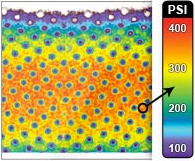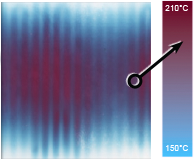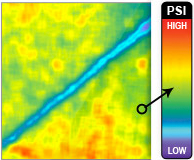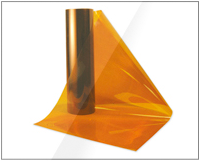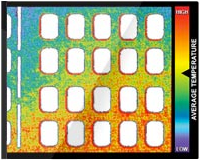Gasket Sealing
Gaskets are used in flange joints to prevent leakage. Gasket Sealing is achieved if there is sufficient force generated by the bolts to compress the gasket evenly, and the flange surfaces are smooth, clean, and free of defects. Another factor to obtaining Gasket Sealing is the design of the bolt spacing. In many joints, the bolt spacing is dictated by the gasket pressure midway between bolts. If insufficient pressure is applied to the gasket in such regions, leakage can result. According to Bolt Science Ltd (www.boltscience.com), “Special pressure sensitive film (such as Fuji film) can be used, once the joint is designed, to determine what the local pressures are within a joint.” It should be noted that Fuji film refers to Fuji Prescale® Film, which is a pressure indicating sensor film that is distributed by Sensor Prodcuts Inc.
Mark Kincart, of Pyramid Technologies, and Jeffrey Stark, of Sensor Products Inc, reported on an application to measure gasket pressure using Fuji Prescale® Film in the following paper, “Determining Reasons for Head Gasket Failures in Air-Cooled Engines with a Simple Testing Methodology”. In this paper, the authors discuss the effects of bolt torque on Gasket Sealing, and they propose a procedure for installing and torquing the bolts to prevent gasket failures.
Their experimental procedure to evaluate Gasket Sealing was as follows:
- Fuji Prescale® Film was placed under the head gasket. Then, the flange was assembled and the bolts were tightened.
- The flange was disassembled, and the Prescale® film was removed. Fuji Prescale® is a Mylar®-based film that contains a layer of tiny microcapsules. The application of force upon the film causes the microcapsules to rupture, producing an instantaneous and permanent high resolution image of pressure variation across the contact area. Like Litmus paper, the color intensity of the film is directly related to the amount of pressure applied to it, the greater the pressure, the more intense the color.
- The Prescale® film was evaluated using Topaq®. Topaq® provides an analysis of the pressure distribution and magnitude between any two surfaces that come into contact. This Windows®-based system renders high resolution, color-calibrated images that accurately reflect how pressure is dispersed. The system consists of a specially calibrated scanner and the Topaq® software.
Figure 1 shows the pressure distribution at the cylinder ring with the bolts torqued to 0.69 kilogram-force meter. This was obtained using Fuji Prescale® Film after Topaq® analysis. At this low torque level, the pressure is non-uniform. As a result, Gasket Sealing will be poor.
In contrast to Figure 1, Figure 2 shows a uniform pressure profile after the bolts have been torqued to 6.22 kilogram-force meter. With this uniform pressure distribution, Gasket Sealing will be excellent. Additional tests determined that the optimum torque level was 4.57 kilogram-force meter.
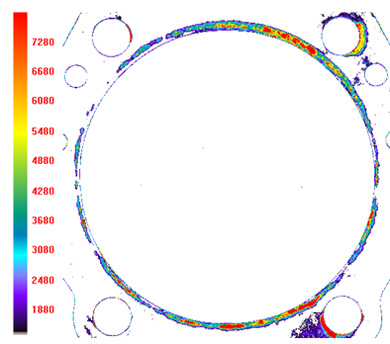
Fig 1: Pressure Distribution Using Fuji Prescale® Film after Topaq® Analysis with Bolts Torqued to 0.69 kilogram-force meter |
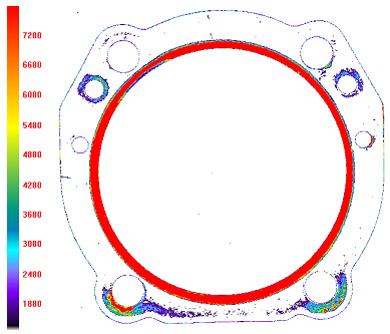
Fig 2: Pressure Distribution Using Fuji Prescale® Film after Topaq® Analysis with Bolts Torqued to 6.22 kilogram-force meter |
The paper also proposed a recommended bolt torque procedure to achieve optimum Gasket Sealing as follows.
- Before assembly, place a drop of oil on the bottom of the head bolt. Assure that the head pocket is smooth and free from burrs.
- Begin torquing at 1.10 kgf m max, following the pattern #1, #2, #3, and #4.
- Increase torque to 2.21 kgf m.
- Increase torque to 4.56 kgf m.

Fig 3: Recommended Bolt Torque Procedure |




